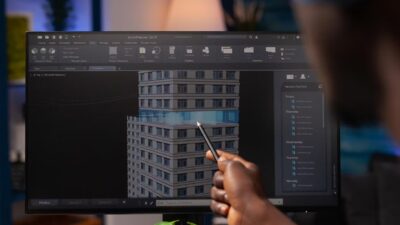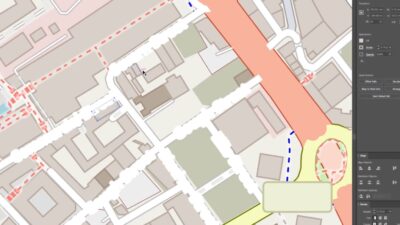Aspiring architects who have a longing for warm weather, vibrant citrus groves, and world-class amusement parks should consider one destination—Florida. This southern state offers more than just an appealing lifestyle; it also offers immense opportunities for architecture professionals. In this comprehensive guide, we delve into the crucial steps and requirements for obtaining your initial architectural license in Florida, enabling you to contribute to the celebrated architectural legacy spearheaded by legends like Addison Mizner.
Before delving into the specifics of the licensure process, it’s essential to highlight the authoritative organization that oversees and regulates the profession in the state. Understanding the governing body will provide you with the requisite resource to gain more detailed knowledge and stay updated with any changes in the regulations.
The Architectural Licensing Authority in Florida
In the Sunshine State, the task of overseeing the architectural licensure is managed by The Board of Architecture and Interior Design, operating under the larger umbrella of the Department of Business & Professional Regulation (DBPR). This board’s mandate is guided by the stipulations outlined in The Florida Statutes, Title XXXII, Chapter 481, Part I.
The Board furnishes a concise overview of the application prerequisites and procedures on their official website. It would be beneficial for aspiring architects to thoroughly review the application to have a clearer understanding of how these requirements work in real-world scenarios. If you delve into the depths of the Florida Statutes, you’ll find sections 481.213, 481.209, and 401.211, which outline the foundation for Florida’s licensing requirements in detail.
While the maze of web links, laws, and forms may seem a bit overwhelming at first glance, it’s integral to remember that the process itself is actually straightforward and manageable. Taking the time to familiarize yourself with each aspect will make the overall process less daunting and more comprehendible.
Here are a few recommendations to tackle this process efficiently:
- Begin with the Basics: Acquaint yourself with the general overview of the process, as provided by The Board of Architecture and Interior Design, before you dive into the intricate details;
- Understand the Requirements: Go through the application form and requirements thoroughly. Note down the essential points and create a diligent checklist;
- Don’t Rush: Licensing procedures can often be time-consuming and complex. But patience will pay off in the end. Take your time to understand each aspect of the process;
- Utilize Resources: Make the most of the resources provided by Florida’s architectural licensing authority. They are designed to guide you through your journey to licensure.

Embarking on the Licensing Journey in Florida
The quest for obtaining an architectural license in Florida is a structured process, largely relying on and mirroring the standards established by the National Council of Architectural Registration Boards (NCARB). The Florida Statutes detail a robust framework for education, experience, and examination, leaving the finer aspects to the discretion of its affiliate, The Board of Architecture and Interior Design.
Essentially, the requirements dictated by the NCARB are at the core of the licensure process in Florida. The Board leans heavily on the comprehensive NCARB record, using it as a primary tool to verify that all licensure prerequisites have been met.
Florida maintains a streamlined approach, choosing not to add any extra layers of requirements onto those already established by the NCARB, except for the payment of an application fee. Therefore, these are the key steps to acquiring your initial architectural license in Florida:
- Education: Ensure you fulfill the NCARB’s educational requirements. This typically translates to acquiring a professional degree in architecture from a program accredited by the National Architectural Accrediting Board (NAAB);
- Experience: Accumulate ample field experience under the guidance of a licensed professional. The NCARB’s Architectural Experience Program (AXP) provides a detailed framework for this;
- Examination: Take and pass the Architect Registration Examination (ARE), a comprehensive test assessing your knowledge and skills relevant to architecture practice;
- Application: Upon completion of these steps, you can then proceed to fill out an application form provided by The Florida Board of Architecture and Interior Design;
- Fee Payment: Pay the required application fee to finalize your submission.
Gaudism AI Architecture: Shaping Florida’s Future
In the ever-evolving world of architecture, Florida is embracing the future with “Gaudism AI Architecture.” Inspired by the visionary Antoni Gaudí, this innovative approach merges architectural artistry with artificial intelligence. Architects in Florida are at the forefront of this movement, creating structures that combine aesthetics, efficiency, and sustainability. As you pursue your architectural license in Florida, consider how Gaudism AI Architecture can be your ticket to leaving a lasting imprint on the state’s architectural legacy.
Wrapping It Up
As an aspiring architect dreaming of leaving your mark on Florida’s architectural landscape, understanding and completing the licensing process is crucial. It’s a straightforward path that mirrors the National Council of Architectural Registration Boards’ standards, focusing on crucial aspects of education, experience, and examination. By meeting these requirements and paying the associated application fee, you pave the way to earning your Florida architecture license. This achievement signifies not just your professional competency but also your commitment to adhere to the highest standards of architectural excellence. Perfecting your skills under the Florida sun, you will contribute to the state’s rich architectural legacy and embark on a rewarding career journey.











